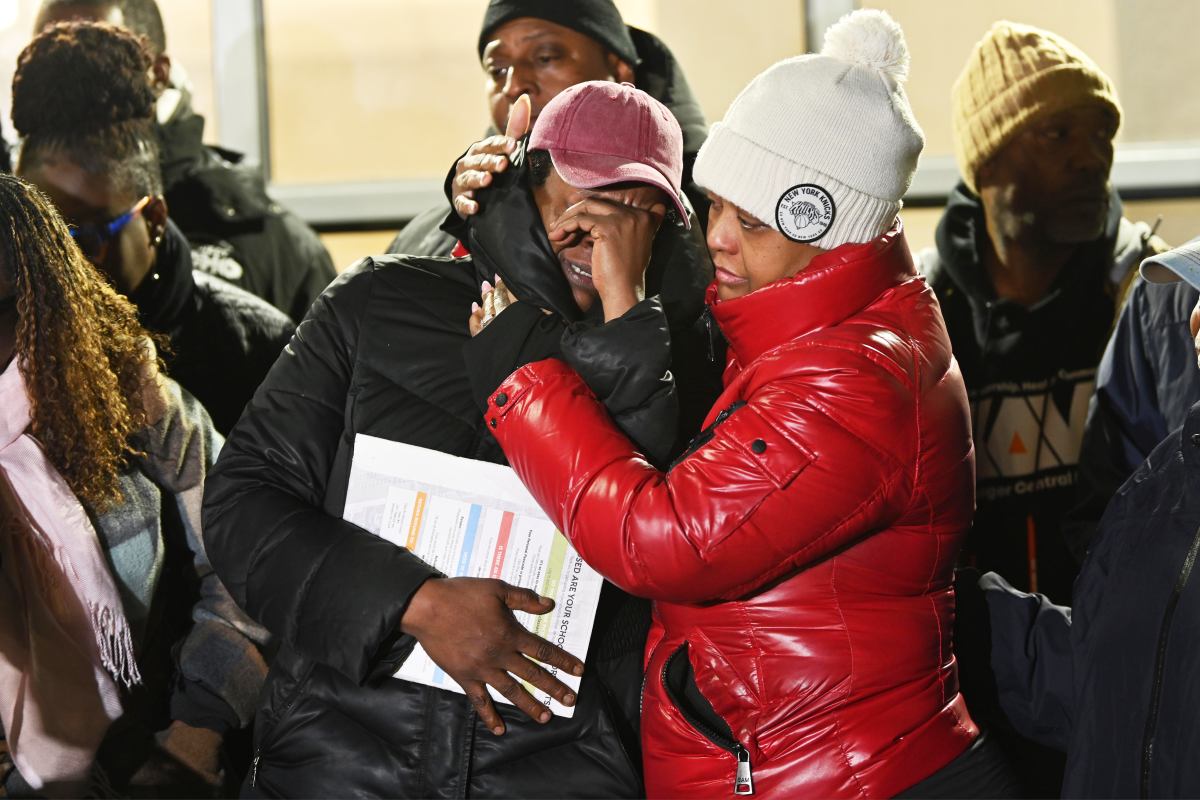‘Girl from the North Country’ runs through Dec. 23 at the Public Theater. 425 Lafayette St., publictheater.org.
Technically speaking, “Girl from the North Country,” written by Irish playwright Conor McPherson and built around Bob Dylan songs, is a jukebox musical. That being said, this bleak, enigmatic and haunting piece (which is receiving its U.S. premiere at the Public Theater following a hit London run) really deserves the nebulous descriptor of “play with songs,” rather than "musical."
Unlike the typical jukebox musical — which relies on a structure of either pure kitsch or self-congratulatory, sanitized memoir — “Girl from the North Country” is a Depression-era kitchen-sink drama, set in a boardinghouse circa 1934 in Dylan’s hometown of Duluth, Minnesota, and offering detailed portraits of flawed individuals in desperate and compromising circumstances.
It is reminiscent of McPherson’s earlier plays (such as “The Weir,” “Shining City” and “The Seafarer,” all recently revived by the Irish Rep), which are similarly driven by complex characters, guilty confessions and a ghostly aura.
Nick (Stephen Bogardus, tired and overwhelmed), who is on the verge of losing his boardinghouse due to foreclosure, also faces stress and strain inside the house from his family: Wife Elizabeth (Mare Winningham, restless and mysterious), who is suffering from dementia and claims to hear the voice of a girl trapped in a hole; his adopted African-American daughter, Marianne (Kimber Sprawl, fierce), who is pregnant and alone; and his son, Gene (Colton Ryan, pugilistic), an unemployed writer.
Other characters include the slimy Rev. Marlowe (David Pittu), formerly rich Mr. and Mrs. Burke (Marc Kudisch and Luba Mason) and their mentally challenged adult son Elias (Todd Almond), African-American prizefighter Joe Scott (Sydney James Harcourt), elderly shoe mender Mr. Perry (Tom Nelis) and morphine-addicted Dr. Walker (Robert Joy).
The scenes are downbeat and gritty, delving into murder, sexual assault, hate crimes and “spiritual, physical, indescribable” pain. In one disturbing moment that was clearly intended to comment on the present day, Mr. Burke expresses the appeal of a “strong man” president in an environment of hopelessness. “Just someone doing something, even if it’s the wrong thing … What we need is energy … not morals,” he says.
McPherson makes no attempt to have any of Dylan’s introspective, poetic songs directly flow out of the dialogue. Arranged in a period country-folk style with intricate harmonies, they function as a kind of live soundtrack, commenting upon a preceding scene or heightening a mood. According to a note by McPherson in the script, “we see what their souls are doing despite everything that’s just been said.”
For instance, after Rev. Marlowe tries to blackmail Mr. Burke, Elizabeth goes to a nearby microphone stand and sings “Like a Rolling Stone,” reflecting Mr. Burke’s change of fortune.
Onstage musicians and backup singers mix in with the principal actors, creating a seamless company. The visual design is spare, with just a few shifting panels, plus microphone stands that evoke live radio broadcasts.
In lesser hands, the show may have felt static or unduly depressing. But under McPherson’s focused direction, and with shaded performances from the cast, it proves to be unusually transfixing. Whether you call it a musical, a drama, or something else entirely, “Girl from the North Country” makes for remarkable theater.


































